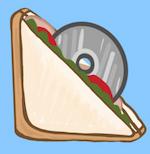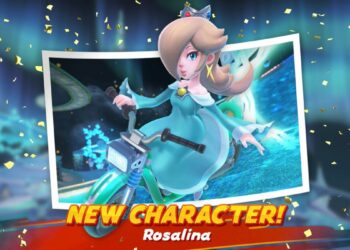Overwatch 2 has a new mode coming to the game next week called Stadium, and Game Sandwich was lucky enough to be invited to an interview alongside other media to talk to three specific people from the team about it. Those people are Game Director Aaron Keller, Senior Game Designer Dylan Snyder, and Lead Level Designer Ryan Smith. Over the course of an hour and a half split into two 45-minute sessions, we all got to pick the brains of these developers and see why exactly Stadium is being considered the “third pillar” of Overwatch. This particular article will feature the first half of that session with Aaron Keller. The second part with Snyder and Smith will be linked here.
Needless to say, Overwatch 2 Stadium is a big departure for the game. Since the original launch of Overwatch 1 in 2016, there have been two focuses to how you play the game – Quick and Competitive Play. While there have been changes within those playlists, they have always been the star of the show. As much as people have fun in Arcade, that is much more seen as a side dish to the main course. With Stadium, Keller says this is looking to be a mode that adds to the player’s experience by adding strategy and even a chance for a breather between the action.
“We really want to put as much time and attention into supporting Stadium as we do the rest of the game. We initially ideated on this game mode years ago, even before Overwatch 2 launched, we had a pitch deck put together for this. Some of it was based off of what we saw as player needs. Like, some of the biggest ones is, for some players, Overwatch doesn’t have enough downtime in it. It can be a constant, crazy sort of battle. Being able to have a round-based structure, where you go back to a shop and have some downtime there really gives you some breathing room.
There’s also not a ton of strategic decision making over the course of an Overwatch match. A lot of it is tactical and a lot of it is really executing on how well you know your hero and work with your team, so in Stadium, we really wanted to give that to players. Then, over the course of development we really recognized that the reason people play a hero shooter is to just get that power fantasy of what it means to play that particular character and Stadium allows us to push that further than we ever have before in the game.”
We asked Keller if the team is looking to make Stadium into something that might feel like a different game from the rest of Overwatch. He answered,
“I look at Stadium as a way for people to play Overwatch with a totally different context. Stadium is about creating a build for your hero and using that to be as effective as possible and to counter what the enemy team is doing. – The intent of Stadium isn’t to necessarily have a completely separate game from the rest of the experience. We still use our same base heroes. We’re still using a lot of the same objective types that we have in our map, so when you’re playing Stadium, it still feels like you’re playing a game of Overwatch, but it has all these additional elements added onto it.”
Keller admits he doesn’t think that everyone will play Stadium, but he envisions it can live cohesively alongside Quick and Competitive Play.
“What I think will happen is we will get a large percentage of our player base moving over to Stadium. I wouldn’t say that it’s going to be a majority of that player base, but I think that we’ll see that happen. I think probably what we’ll see is a lot of people playing it and other game modes in Stadium, a really large percentage of the players that play Quick Play and Competitive play both of those and they move back and forth, so I would expect for us to see a lot of behavior like that for Stadium.”
Stadium is also being handled by a separate group of people within the Overwatch team, which should give it room to grow at its own pace.
“Going forward with the game mode itself, we do have a separate set of resources or a totally separate set of people that are solely devoted to working on Stadium. So the mode is going to ship with 17 heroes. We’re going to be adding heroes to it seasonally. We’re going to be adding maps to Stadium, game modes to Stadium and a bunch of really cool features that are going to affect the way that people put builds together and those will all be coming out in the subsequent seasons and over the course of the next year.
So we want people to look at Overwatch and be like, ‘hey, this game is always growing. It’s always bringing new stuff to it.’ Sometimes that’s happening to the entire game. Sometimes that’s happening to Stadium, and sometimes, it’s happening to our Quick Play and Competitive queues, but it is always growing.”
After hearing that one of the reasons Overwatch’s PvE skill trees were canceled was because of the growing scope of that side of the game, it’s easy to see why people might be worried about the impact adding a new mode like Stadium could have on Overwatch. Keller says that adding this mode with all of its elements will actually work in favor of the team from a balance standpoint.
“We recognize how important hero balance is to our players, and it is the thing that we get the most feedback on from our community, and we agree, it’s an incredibly important part of running the live service of Overwatch 2.
The interesting thing about it is sometimes the more systems you add to a game or to a game mode, the easier it can be to balance across the entire experience. So, in Season 15, we added perks to Overwatch. So now we have multiple knobs to turn on an individual hero to balance them. We can adjust their base power, like their health or their weapon damage, but we can also go in and balance perks. And if you look at some of the balance patches we’ve done lately, it’s been heavily skewed towards managing some of the perks and balancing some of the perks. And Stadium, I think, is going to be the same way where there are so many different aspects of the mode that we can now tune either for the whole mode or for specific heroes.
I think that from the outside, it probably looks like this is like a really daunting thing to do, but I think for us, having a lot of these systems be separate from the main game is going to allow us to independently tune Stadium and keep it in a balanced state while we can independently tune the core game and keep that in a balanced state.”
Keller also talked about how there was always hope for Stadium to be as big as it is, and gave some interesting insights into a surprising origin for the start of Stadium development.
“From the very start, we had high hopes for Stadium. As part of the history of Stadium I mentioned earlier that we started working on this mode even before Overwatch 2 shipped, my oldest son and I, we play a lot of Hearthstone Battlegrounds together, and if you know anything about that mode, it’s kind of like a different way of playing Hearthstone, you know? And he actually came up with the first pitch for Stadium and gave me a design doc for it. It was kind of based off of trying to get another big pillar of Overwatch into the game, similar to what we were playing together.
So it did start that direction, and we had the hopes that it would always turn into the way we’re releasing it. Over development, you just never really know sometimes. And I think it was over the last six months or so that we really saw the game mode coalesce and start to come together. As we put together the armory and the shape that it is right now, some of the more transformative abilities started coming online.
And then really recently, as the really polished version of the announcer and the music and the transition screens went in, I think we really saw that there’s something special here, and the great part about it now is that when we do stadium play tests on the team, a lot of times it’s hard to get people to stop playing. We’ll let everybody play for an hour and sometimes a match can take 30 minutes or so, and you might have 15 minutes left in the play test time, and everyone’s always going to click to start another one, even though it might make them a couple minutes late to their next meeting.”
There’s also a little bit of chaos that the Overwatch team wants to introduce with Stadium. A way for the game to be a little more unpredictable when compared to the other main modes.
“Stadium is a unique mode for Overwatch, and it’s something that we’ve pushed a lot further than the rest of the game, but we have made these changes to the base game, too. And so while Stadium has been in development for a few years, I think our philosophy for changing the way we balance core Overwatch, our quick playing competitive modes, is something that we’ve been talking about since late 2023 and early 2024. I think that we recognize that while players want to have a competitive experience, they don’t always want a completely even experience. They want to feel some of,like these highs and lows that the game can provide, and they want to really be able to feel that power, that power fantasy that the heroes can provide.
I think what we had started to do over time was as we started to try to make the game as balanced as possible and we started kind of knocking down some of those moments and you would lose some of it. And so while the game could positively be described as really consistent, it could also negatively be described as really consistent, and so we do want to add more moments where players can feel like they are doing something amazing, and we want them to be able to play a match and then be able to go to their friends afterwards and be like, oh, wow, you would never believe what I was able to accomplish or this big fight that happened in Overwatch.
And so we’ve shifted to that, and we’ve had some of the systems that we’ve implemented now, perks being the primary one, to really start delivering on some of that and loosening up some of that consistency that the game had.”
We also had the chance to ask about the lack of hero swapping in Stadium. This has been a core feature of Overwatch since the very beginning, with people like the game’s original director Jeff Kaplan being very passionate about its place in the game. We brought up a situation where a D.Va player is having issues with a Zarya enemy. Keller responded with,
“The team has talked extensively about hero swapping in Stadium, and I should probably just get into why we’re doing it. The reason we don’t have hero swapping in the game mode is because we really want a team to be able to recognize what the enemy team is doing and then be able to build to counter it. And so, a lot of Stadium takes place during combat and during the PvP phases, but it’s just as important to be able to put a strategy together around what you’re unlocking in the armory, and it becomes much, much harder to do that if you can’t predict what the heroes are going to be on the enemy team from round to round.
That being said, it is a departure for Overwatch and so I think that there’s a few reasons why players might push back against it. One is they’re just going to have an expectation from playing the rest of the game that they would be able to do this, and two, I think probably more important is the example that you brought up, which is like, what do I do if I feel like I’m being hard countered? We do have a lot in the Armory that is designed to allow a player to be able to flex or a hero to be able to flex to do that. Some of the examples are that we’ve got anti-barrier builds that you can use. We’ve even got some anti-beam builds that are available to different heroes in there, so that, yeah, if you’re going up against a Zarya, there’s some things that either you or people on your team are going to be able to do in order to be able to counter that.
This is where we’re starting. This is where Stadium is starting. The most important thing, I think, to communicate to players, though, is that Stadium is going to constantly evolve. We’re going to be adding stuff to it every season, and we have a lot of resources dedicated to this. So in the world where we get overwhelming feedback that hero swapping ought to be a part of Stadium, we’ve talked about some solutions that we could use for that while still maintaining that aspect of knowing what it is that you’re going to be able to go up against and having a strategy for it. I don’t think we’re really ready to talk about what those are. We’d prefer for people to be able to take it the way that it is and play it with that intent, but we’re always listening to what our players want, and we’re always ready to react to it.”
The game director ended his session with saying that he hopes people that have fallen off the game over the years will come back for Stadium.
“We’ve poured a lot of time, energy, and passion into it, and I think the thing that I think I’d like to impart with the group is that we are going to continue to pour that time, and passion into Stadium as we release new heroes, new maps, new modes, new systems in the future as well as doing really frequent balance patches to the mode. I think I’d like to reiterate that if you’ve been looking at Overwatch and kind of wondering when you could come back and try the game out, now’s the moment. And Stadium is the moment to do that.”






